“TECH NECK” – 5 Exercises to Help Combat Chronic Neck Pain
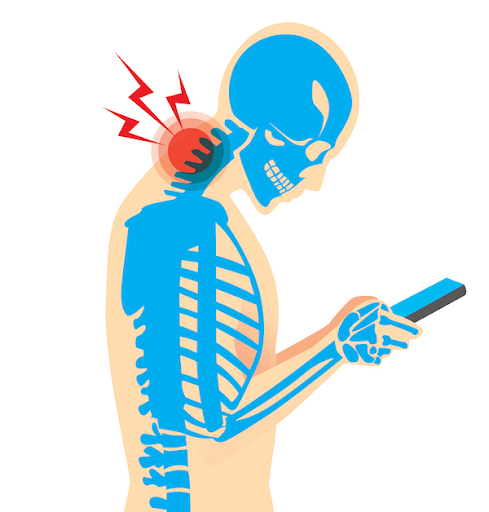
What is TECH Neck?
TECH neck is a modern age term used to describe chronic neck pain caused by excessive TEXTing on mobile devices. The term has been broadened to include tablets and computers, and can also be related to driving, reading, and watching TV. In today’s society, we have developed sedentary habits driven by electronic devices that are contributing to a global epidemic. An average person spends 2-4 hours per day with their head tilted forward. This averages to 730-1460 hours per year of excess stress and strain placed on the cervical spine as a result of poor posture. Research reveals that poor posture reduces testosterone and serotonin levels, raises cortisol, triggers negative moods, and leads to overall fatigue.
Today’s sedentary habits are causing postural changes that increase forces on our cervical spine. This lead to a combination of muscle inhibition and muscle shortening of the structures surrounding the neck know as Upper Crossed Syndrome. It is a main culprit to chronic neck pain. At Symmetry Physical Therapy, we specialize in postural assessment and treatment strategies to decrease pain, improve postural alignment, and reverse symptoms of Upper Crossed Syndrome.
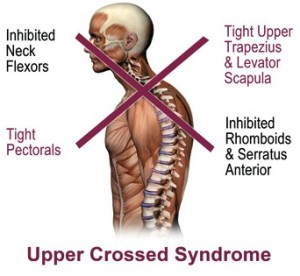
Anatomy: What is Upper Crossed Syndrome?
Several postural changes occur when a significant amount of time is spent looking down at mobile or electronic devices. We begin to develop a forward head and rounded shoulders posture, which leads to changes in the anatomical position and function of the muscles and joints surrounding the neck. As shown in this picture, the forward head and rounded shoulders tend to inhibit the deep cervical flexors anteriorly, and the rhomboids and serratus anterior posteriorly. This posture also tends to cause muscle shortening and tightness of the pectoralis muscles anteriorly, and the upper trapezius and levator scapula muscles posteriorly. These dysfunctions develop in a crossed pattern due to the changes in bony alignment of the spine. They may worsen overtime if not corrected.
Forces on the Neck
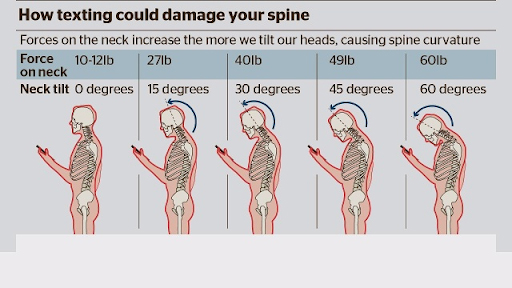
Another unfortunate result of TECH neck is the increased forces we place on our neck with looking down and tilting forward. Research by Kenneth K. Hansraj, MD shows that as we begin to tilt forward, the forces required to hold up the head increase and cause the head to weigh relatively more.
A typical head weighs 10-12 pounds when it is in a neutral spine position. However, at a 30 degree forward tilt of the head, the weight increases to 40 pounds, and at a 60 degree tilt the weight increases to 60 pounds. Can you imagine the amount of stress placed on your spine to carry a 60 pound bowling ball on your neck? The excess forces placed upon the cervical spine may lead to early wear and tear early degeneration and may require surgical intervention. Avoiding this forward tilt, forward head, and rounded shoulders posture can help protect your spine for the long term.
One-on-One Treatment Sessions
Get personalized attention with our expert therapists to address your unique needs and goals.
Book NowRehabilitation Program
At Symmetry Physical Therapy, we specialize in creating individualized rehabilitation programs focused on improving posture and restoring normal muscle function. If you are stuck at a desk working in the Miami area and in need of physical therapy for posture, please give us a call!
Treatment plans include a combination of manual therapy and corrective exercises. They reduce pressure on the spine, strengthen inhibited muscles, and lengthen tight, shortened muscles.
Exercises to Combat TECH Neck
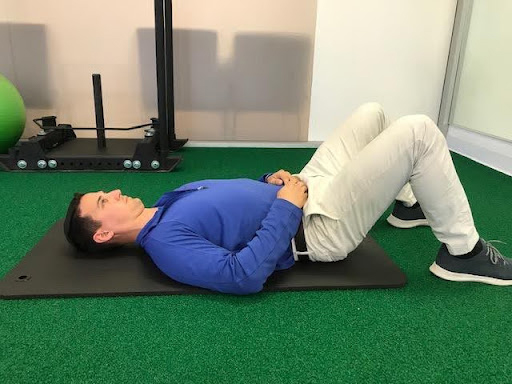
Inhibited Cervical Flexors – Chin tucks
While lying on your back, tuck your chin straight down towards your spine and hold for 10 seconds. Repeat 10 times. You should feel the muscles in the front of your neck working.
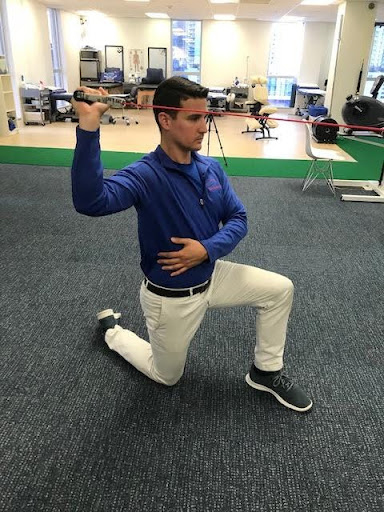
Inhibited Rhomboids – External Rotation at 90 degrees Abduction
Start by holding a light to medium resistance band with your arm at 90 degrees abduction and elbow bent to 90 degrees. Begin with your forearm parallel to the floor. Next, roll your shoulder back as you pull the band so that your forearm is directed upward and wrist is pointing toward the ceiling. Maintain your shoulder blade in a retracted and downward position the entire time.
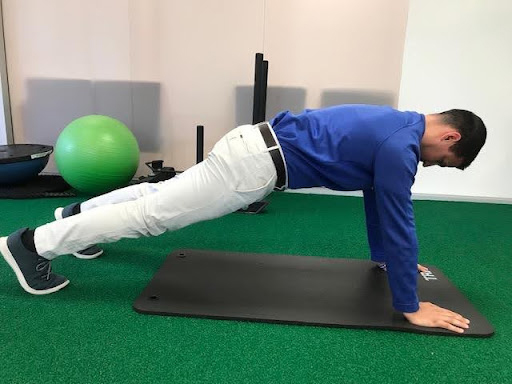
Inhibited Serratus Anterior – Push Up Plank Plus
Start in a push up position with elbows fully extended as shown. Maintain this position as you protract your shoulder blades forward to raise your body upward a few inches. Then, return to original position.
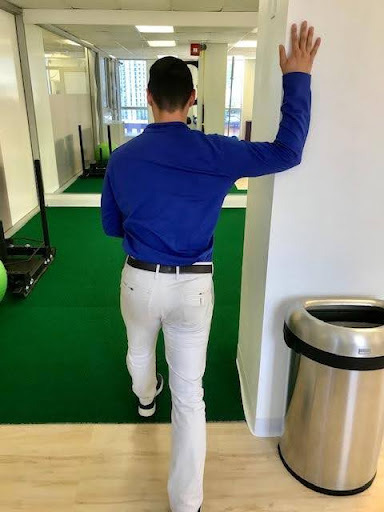
Tight Pectoralis Stretch
Stand at a corner or doorway. Bring your arm to the 90/90 position with your forearm against the wall. Separate your feet so that your opposite leg is in front and slowly lean forward until you feel a gentle stretch in the front of your shoulder and chest.
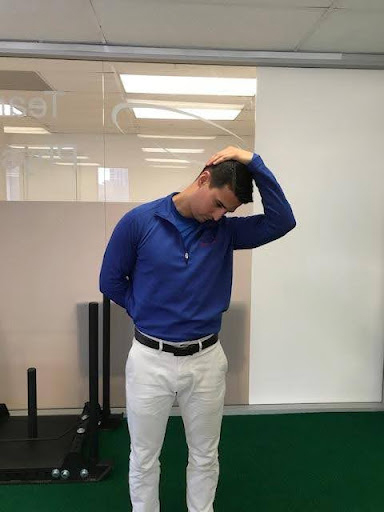
Tight Upper Trapezius and Levator Scapula Stretches
Begin by retracting your head back into a chin tuck position. Next, place one hand behind your back and gently pull your head diagonally towards the opposite side with the help of your other arm.
–
Bae, W. S., Lee, H. O., Shin, J. W., & Lee, K. C. (2016). The effect of middle and lower trapezius strength exercises and levator scapulae and upper trapezius stretching exercises in upper crossed syndrome. Journal of physical therapy science, 28(5), 1636–1639. doi:10.1589/jpts.28.1636
Carney DR1, Cuddy AJ, Yap AJ. Power posing: brief nonverbal displays affect neuroen- docrine levels and risk tolerance. Psychol Sci. 2010 Oct;21(10):1363–8.
Hansraj, K. K., (2014). Assessment of Stresses in the Cervical Spine Caused by Posture and Position of the Head. Neuro and Spine Surgery.
